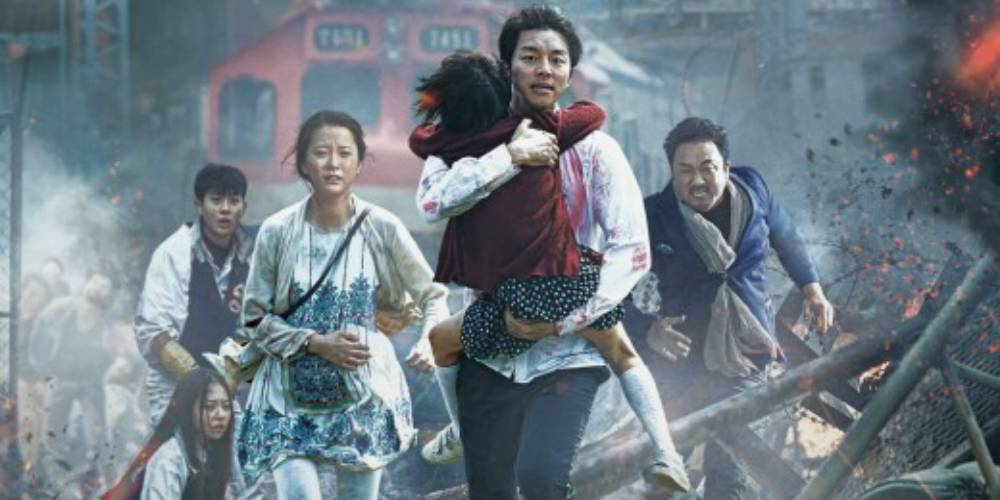As promised, part three of our review of some of 2016’s overlooked horror films is going to cover a few of the foreign fright flicks that might be worth a few hours of your time. So, let’s get started.
Shin Godzilla
When a giant, unbelievably goofy looking creature surfaces in Tokyo Bay and slithers onto land, the island nation understandably goes into panic mode. Japanese forces do their best to halt the monster, but each successive attack only causes the creature to evolve into larger, more dangerous forms. It isn’t long before the newly dubbed Godzilla is walking on two legs and breathing radioactive fire everywhere. To make matters worse, the rest of the world’s superpowers have given the Japanese government only a few short days to get rid of the beast before they take matters into their own hands and bomb the island country off the face of the Earth.
Okay, so Godzilla movies aren’t technically horror, but any Japanese produced film featuring the Big G is worth taking note of. Besides, about three quarters of the movie actually deals with one of the most terrifying things on the planet…government bureaucracy. Yes, this time around, rather than dole out an anti-war or environmental message, Toho has decided to dabble in political satire. It’s an approach that won’t work for everybody, but for those it does click with, all the boardroom scenes will be quite humorous, and perhaps a bit educational on how the Japanese see themselves and their place in the world. And as a bonus, those who do stick it out to the end of the film will be rewarded with a final image that is one of the creepiest WTF moments to hit the big screen all year long,
The Wailing
When an old Japanese man shows up in a small South Korean village, a strange sickness begins to spread throughout the community. Those infected go into berserker rages before eventually collapsing into a coma and dying. After a hunter spots the red-eyed, naked stranger eating an animal raw in the woods, police go to the old man’s hut to investigate. There they discover personal items of each of the infected, including a shoe belonging to the daughter of Officer Jong-goo. Believing a demon to be at work, Jong-goo’s mother-in-law enlists the aid of a shaman to perform an exorcism, but Jong-goo interrupts the ceremony, believing it to be a waste of time. He then assembles a group of friends to track down the old man in the woods and kill him. Unfortunately, the outing does nothing to stop the sickness, and the now less skeptical Jong-goo is left to discover just who is harboring the demon terrorizing his people.
Well, that synopsis covers about 15 minutes of the 2 ½ hour long The Wailing. The movie is probably a bit too lengthy and more than a little unfocused, but it’s still lots of fun watching writer/director Hong-jin Na throw every idea he ever had into his story. Like many a Korean movie, The Wailing veers wildly in tone from scene to scene, jumping from slapstick to abject horror in the blink of an eye. Still, over the course of the film, there is a slow building of tension that pays off well in a climax that hinges on the power that incredulity and doubt grants to the forces of evil.
Train to Busan
Unable to provide his daughter with the attention she deserves, work-obsessed businessman Seok Woo decides to take the girl back to Busan to live with her mother. As the pair board an express train in Seoul to begin their journey, a zombie virus breaks out. It isn’t long before one of the passengers reveals they’ve been bitten and mayhem erupts on board. Trapped on the wrong end of the train, Seok Woo and several other passengers must fight their way car by car through the rapidly growing zombie hoard.
You can almost visualize the thought process that went into Train to Busan. It’s as if writer/director Sang-ho Yeon was watching Snowpiercer and decided what would make that scenario ten times better would be a dash of World War Z. Whether it really makes it better is arguable, but it certainly makes it fun. Also, amongst all the zombie bashing, Sang-ho Yeon manages to sneak in a bit of biting commentary on South Korea’s rigid social hierarchy. You don’t really need to be able to tell your chungins from your sangmins to enjoy the movie, though, as the zombie stuff is plenty watchable on its own. Because of that, there’s already talk of an American remake, so be sure to be one of the cool kids and see the original before us Yanks ruin it.
Subtitled Terrors
No doubt, there will be some who have no interest in watching a non-English horror film. In fact, a few years back, an article in Indiewire suggested that the U.S. box office for foreign-language films had declined by 61% due in large part because American audiences don’t like any kind of movies with subtitles. Now, the language barrier has been a problem going all the way back to the Tower of Babel, at least if you take the story literally, that is. Some commentaries on the subject, though, interpret the tale to mean that the people at Babel were of one mind and voice, but fell into in-fighting when they couldn’t reach common accord. The nicety of that interpretation is that it leaves the door open for once again coming together as a common people, different languages notwithstanding. Movies can help with that, because they can illustrate that no matter what part of the world they hail from, people have the same hopes and concerns as their foreign neighbors. Horror is particularly suited for such a message, as deep down, we’re all pretty much scared of the same things. So, why not gear up for a little light reading and take a chance on some subtitled terrors. Even if you don’t learn anything new, you’re guaranteed a few good chills.











